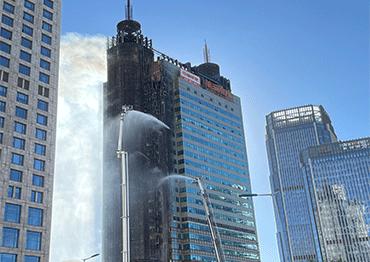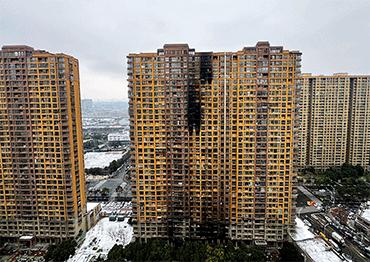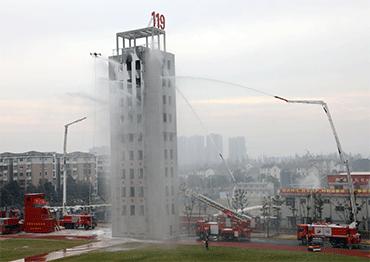On January 30, 2024, a fire broke out on the 14th floor of a residential building in Guiyang, capital of Guizhou Province. A resident tried hard to extinguish the blaze with the hydrants installed on each floor, only to find there was no water in them. Firefighters had to bring water all the way up to the 14th floor, increasing the response time. The resident’s mother died.
Li Sicheng, dean of the Fire Control School, China People’s Police University, told NewsChina that many fire safety facilities are not maintained, and are therefore useless for fighting fires.
“The fire safety facilities in some high-rise residential buildings are basically not fit for use,” Huang Anyong, director of the Real Estate Management Institute at Southeast University in Nanjing, Jiangsu Province, told NewsChina.
According to Li, besides fire stations, community police bureaus are also responsible for disseminating fire safety information, as well as community management organizations and power suppliers.
The main problem is the lack of experienced personnel to conduct fire safety spot checks. As residential units come lower on the list than public buildings, they are unlikely to be chosen for checks.
“Non-professional agencies like community commissions and community police bureaus generally don’t get much professional training in fire safety... and even when they do spot checks [on residential buildings], it’s probably only a box-ticking exercise,” Li said. “It seems everyone is managing fire safety, but no one does it very well,” he added.
Experts believe that building managers, who collect fees from residents to maintain public areas and grounds, should take more responsibility for fire safety. This should include ensuring all fire safety equipment is in working order, educating residents on fire safety, and ensuring there are safe evacuation routes.
But since there are no national rules to compel property managers to ensure fire safety standards and practices, most do not bother much.
“Property managers have a lot of work to do, plus fire safety systems aren’t often used, so it’s hard for them to discover if there are problems,” Huang said. “Their work focuses more on things like sanitation, landscaping and elevator maintenance,” he added.
Even if building managers promote fire safety, many residents ignore it, for example, continuing to bring e-bikes and batteries inside buildings to recharge them, although this is a major cause of fires.
The Nanjing fire was caused by a battery igniting among improperly parked e-bikes at the base of the building, despite property managers enforcing parking regulations for two years. Before the fire, many residents reported the problem to community authorities, but nothing was done as there is still no clarity on who should be responsible for ensuring the rules are followed. Property managers can only ask residents to follow the rules, but have no power to act against those who flout them.
Huang pointed out who pays for fire safety is an obstacle too, because there is no regulation that lays out who should pay to maintain and manage fire safety facilities – the residents, building management or wider community authorities.
“For older residential buildings, the public repair fund [paid into by residents] is far from enough to cover fire safety facilities, and it’s hard to ask residents to pay for it all by themselves,” Huang said, suggesting that property management companies prioritize fire safety equipment over vanity projects like beautifying public areas when using public maintenance funds.
“Fire risks caused by unmaintained facilities get worse as buildings age, and this could prove a heavy burden for everyone in society,” Xu said.

 Old Version
Old Version


